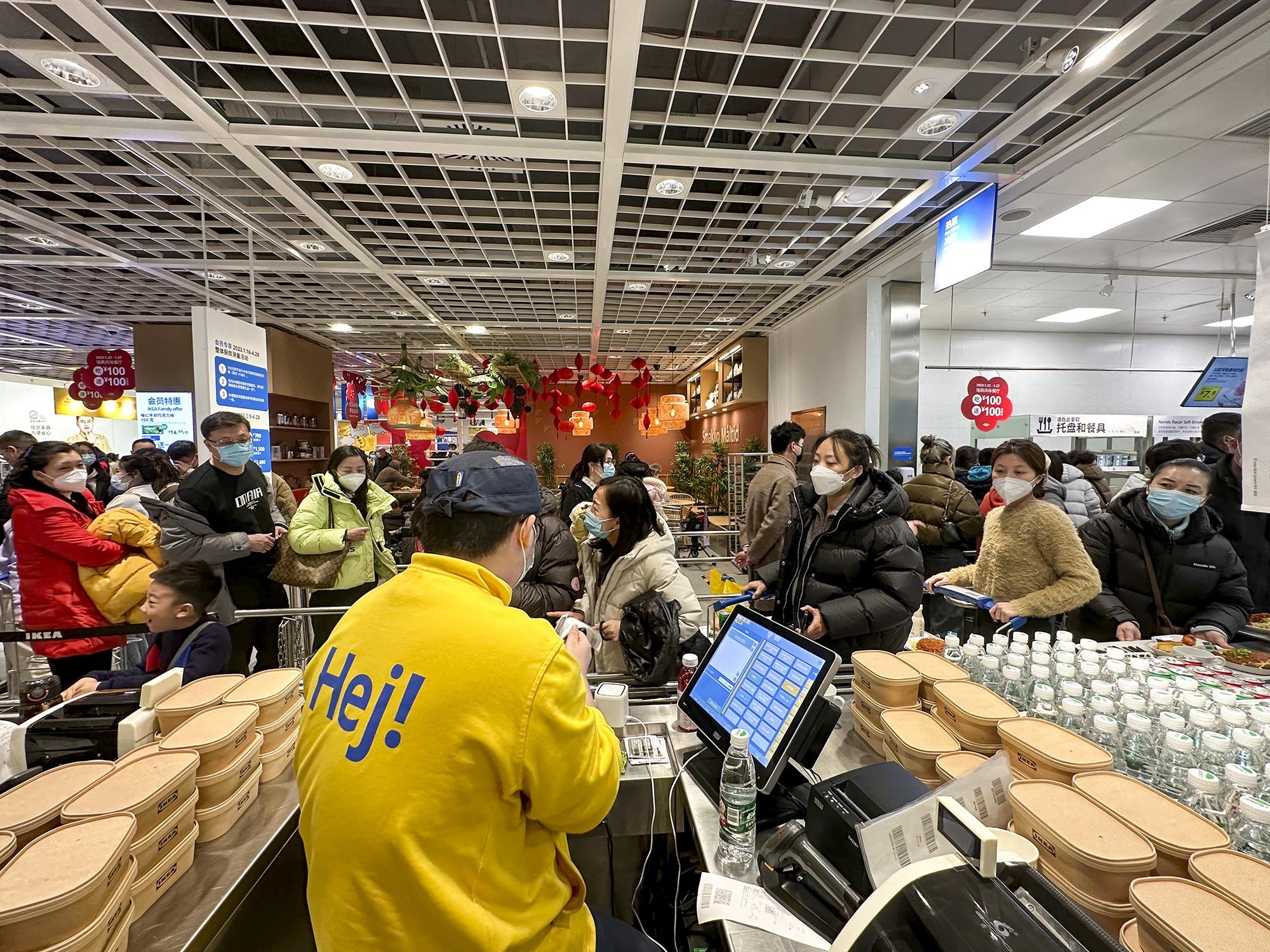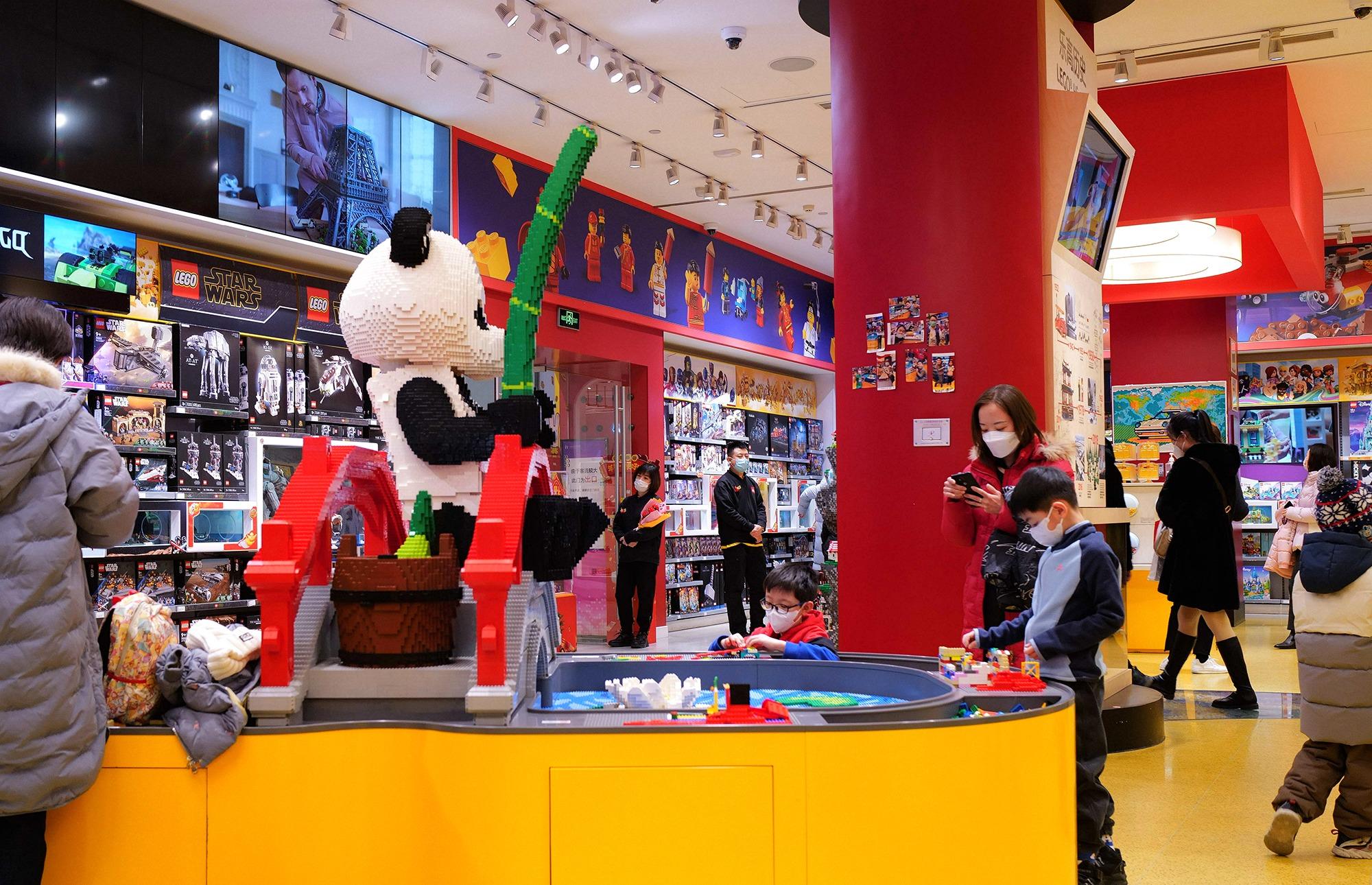Many opt to celebrate holiday at home, some return to hometowns, while for others, it's a great occasion to travel
 Customers wait in checkout lines at an Ikea store in Zhengzhou, Henan province, on Jan 24, 2023. (JIAO XIAOXIANG / FOR CHINA DAILY)
Customers wait in checkout lines at an Ikea store in Zhengzhou, Henan province, on Jan 24, 2023. (JIAO XIAOXIANG / FOR CHINA DAILY)
Mona Hao, a 29-year-old woman who works at an internet tech firm in Hangzhou, Zhejiang province, plans to spend Spring Festival in traditional garb to express her respect for Chinese culture.
Since her childhood, Hao has worn Tang suits during the Spring Festival. Over time, wearing hanfu, the traditional attire of the Han ethnic group, has become so routine that she, on occasion, also wears it for work.
A big collector of traditional Chinese apparel, Hao owns over 100 sets of hanfu, mainly purchasing them online.
The price for a single piece that she bought could be 300 yuan ($42) to 500 yuan, or even higher.
"For this year's Spring Festival, I plan to buy two to three sets of hanfu costumes in red and with the sign of the dragon to celebrate the Year of the Dragon," Hao said.
She also wants to buy some winter clothing in red, fur jackets and fluffy scarves to match.
READ MORE: New Year goods economy drives market
As the Spring Festival is one of the biggest gifting seasons of the Chinese lunar year, Hao has also bought modified traditional Chinese clothing for her mother and other female relatives.
Over the years, influenced by Hao, the family has also become more interested in these outfits and has sought her recommendations.
More youngsters in China are making plans for the Spring Festival holiday, looking for new ways to spend their money.
About 83 percent of those aged between 18 and 35 think they, or their spouses, are the primary planners for the festival this year, while the rest say it is their parents, according to the 2024 insights on social media trends during the festival, compiled jointly by market research institute Kantar and Xiaohongshu, a lifestyle-focused social media platform.
The report, based on interviews with 400 young users across first and third-tier cities, highlights that 48 percent of respondents have opted to celebrate the holiday at home, 33 percent plan to return to their hometowns, while 18 percent intend to travel, with 1 percent saying they have no specific plans yet.
The report has found that the top fixed spending during the Spring Festival will be on apparel and accessories (48 percent), snacks, alcohol and beverages (36 percent), fresh agricultural products (36 percent), out-of-home dining (36 percent), and personal hygiene (36 percent).
 Children have fun at a Lego store in Beijing on Feb 12, 2023. (QIN CANSONG / FOR CHINA DAILY)
Children have fun at a Lego store in Beijing on Feb 12, 2023. (QIN CANSONG / FOR CHINA DAILY)
To celebrate the Lantern Festival, or the 15th day of the Lunar New Year, Hao has plans to buy some lanterns and take them to lantern shows.
"The Lantern Festival is a popular time to wear hanfu — in a white silk jacket and a blue satin skirt," she said.
Spring Festival is also a time for big meals and happy gatherings, when snacks and beverages are in high demand.
Jessica Liu, a 30-year-old office worker in Beijing, usually buys various kinds of snacks with beautiful packaging for family members during the Spring Festival.
This year, she plans to buy some cookies, dried plums and marshmallows for herself and other young relatives, as well as nuts and melon seeds for the elderly.
"I will buy many snacks, fill the plates with food and put them on the table. This will create a joyful atmosphere during Chinese New Year," Liu said.
Eyeing the increasingly sophisticated demands from young consumers, Chinese snack makers are taking more effort in designing and marketing their products.
ALSO READ: Luxury shopping over extended holiday heating up
Snack maker Weilong Delicious Global Holdings launched gift boxes in advance late last year to prepare for Spring Festival.
The gift box is designed in the shape of a dragon and can be stretched, making it more fun when consumers try to open the boxes, the company said.
The company, which makes popular spicy snacks made of wheat flour and konjac, has also created a series of short videos to promote the gift box by combining the latest marketing trends and buzzwords, thus attracting the interest of young consumers in its gift boxes as well as other products.
Weilong said marketing for the Spring Festival needs to keep up with market changes, and brands need to directly tug at the emotions of young people, while sticking to the traditions and heritage of Chinese culture.
For many young people, the essence of Lunar New Year is returning home after a year of living away from parents and loved ones.
Liu Qin, 31, a brand director at a firm in Shanghai, is expected to spend the holiday with her parents in hometown Enshi, in Hubei province, following the customs of her Tujia ethnic group. "We will go to the local market and get some food ingredients," said Liu.
The Tujia celebrate by staying at home, preparing a grand dinner on the last day of the lunar year, and enjoying the first day of the Year of the Dragon with play and rest.
"I will start working overseas after the Spring Festival as our business has expanded to international markets. It is important for me to spend the holiday with my parents now," said Liu.
Contact the writers at wangzhuoqiong@chinadaily.com.cn



